At 4 days old I placed my Miniture Appleyard ducklings into the chicken coup for a run around. It was a hot day, the coup has a very fine wire mesh and so I thought my baby ducklings would be perfectly safe for a short period. I was wrong - very sadly.
I watched the for around 15 minutes and they were running around happily, foraging for food and splashing in the shallow water bowl.
I went back to them about 20 minutes later only to find one had had the end of its beak smashed off and a hole in its head. It was heart wrenching and horrifying!
We can only think that it must have poked its tiny beak out of the fine wire mess and was attacked by one of our bantams.
The duckling was obviously in a lot of distress. It's beak was smashed and had a piece missing. It's head was also bleeding.
We carefully cleaned it up with cotton wool, Surgical Difenfectant (Hibisrub), diluted in hot water.
After drying we very carefully glue the broken pieces back together with super glue. Trying to ensure that we didn't glue it's nostril, tongue or beak together. Tiny drops of super glue, carefully placed onto the cracks. Each time holding the duckling still for a few minutes until the glue had dried. We then checked that it could open it's beak.
We then spayed the wounds with a special poultry disenfectant.
We repeated this the next day.
We kept it safely in the plastic brooder, changing it's water regularly, fed it crumbled meal worms and chick crumb.
For the first 2 days it was very subdued. It drank and fed but only small amounts.
At 8 days old, 4 days after the accident, it is now feeding, drinking and behaving normally.The beak seems to be healing.
We are so pleased with its progress. Fingers crossed!!!
Our Poor Little Mini Appleyards Duck's Broken Beak
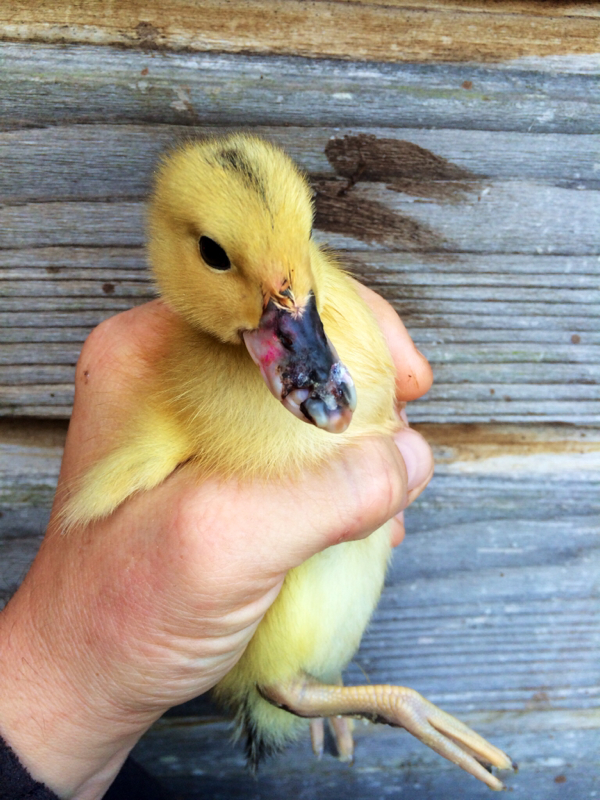
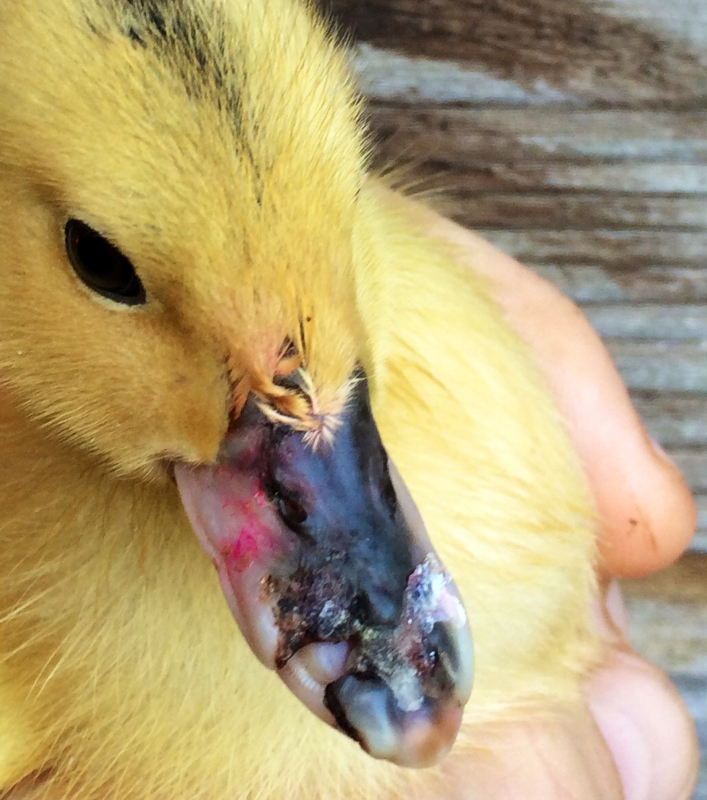
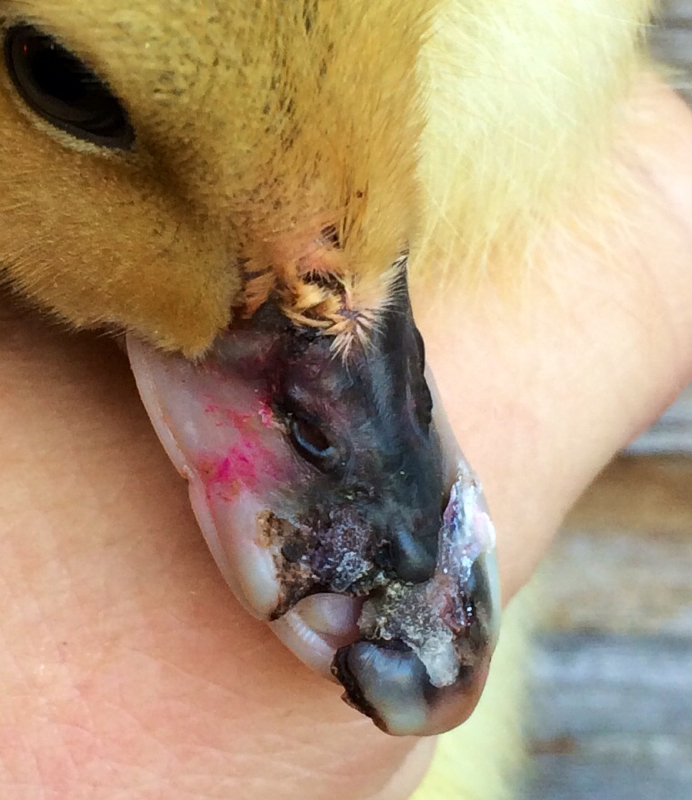
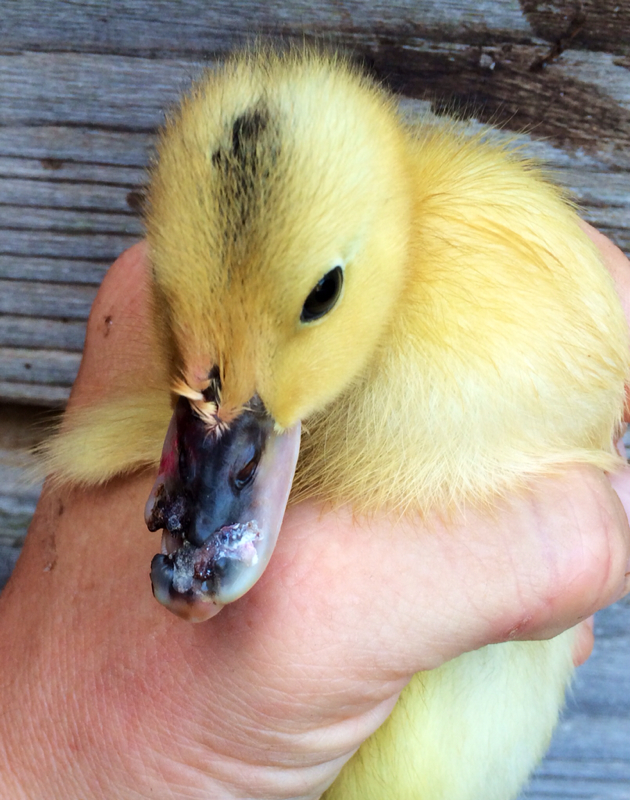
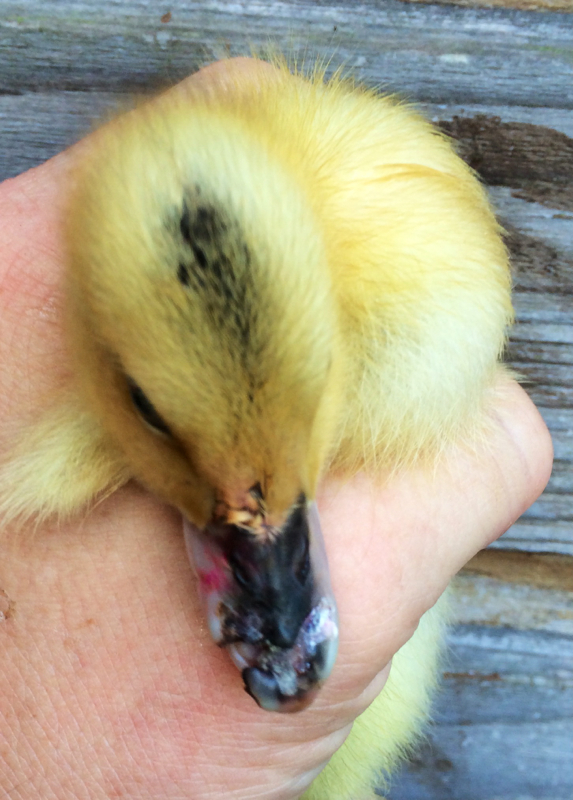
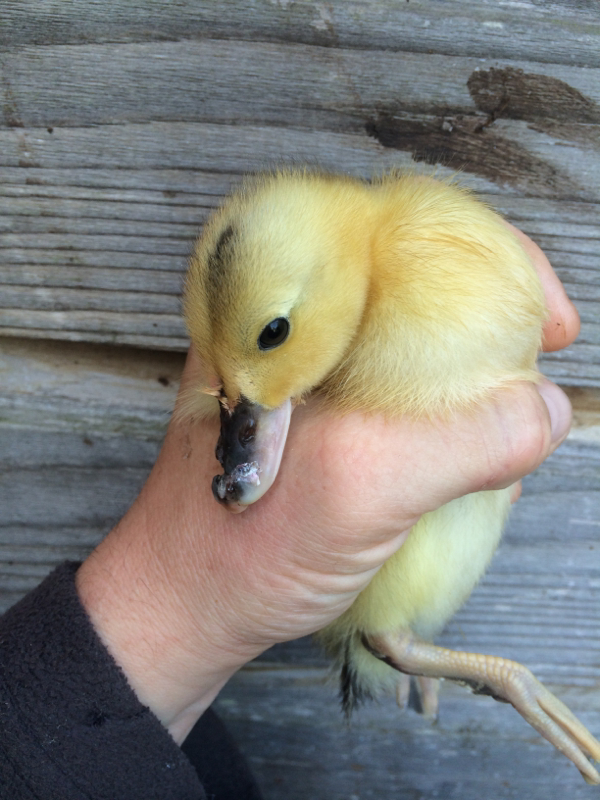
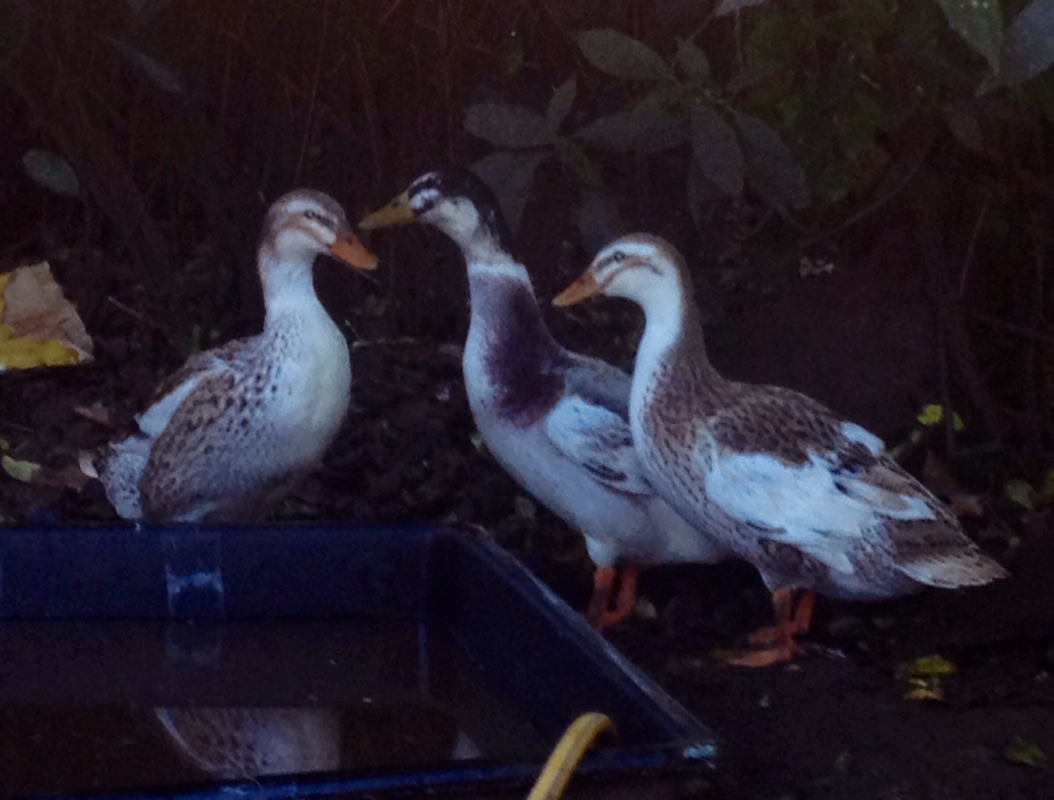

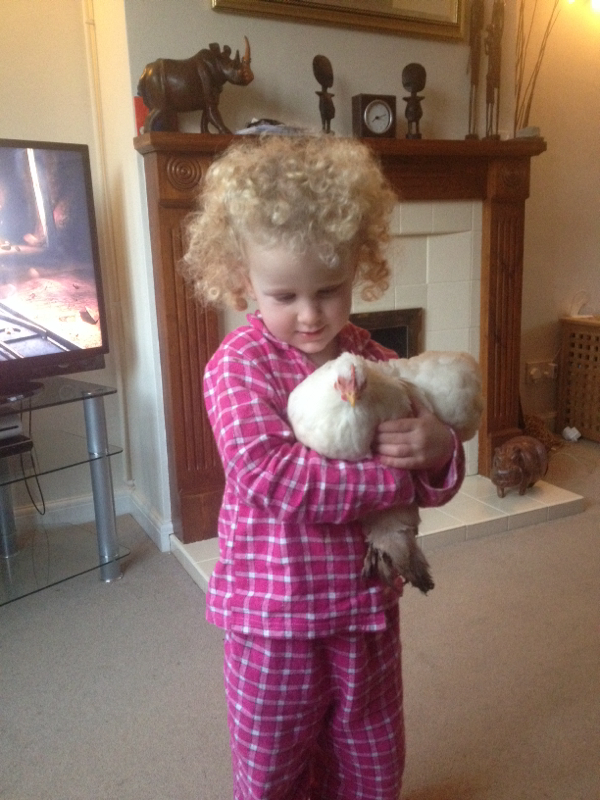

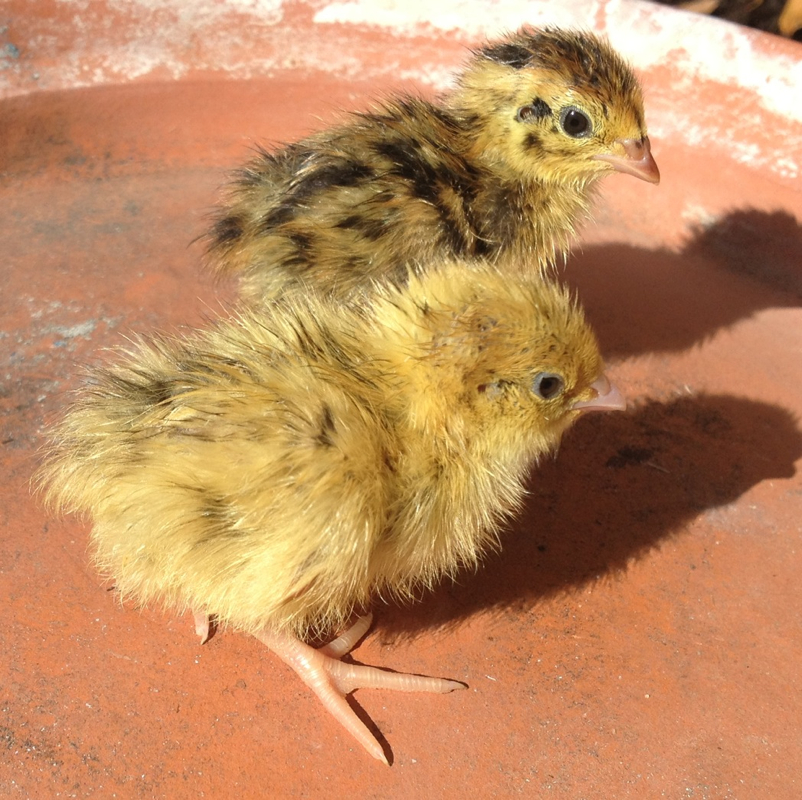
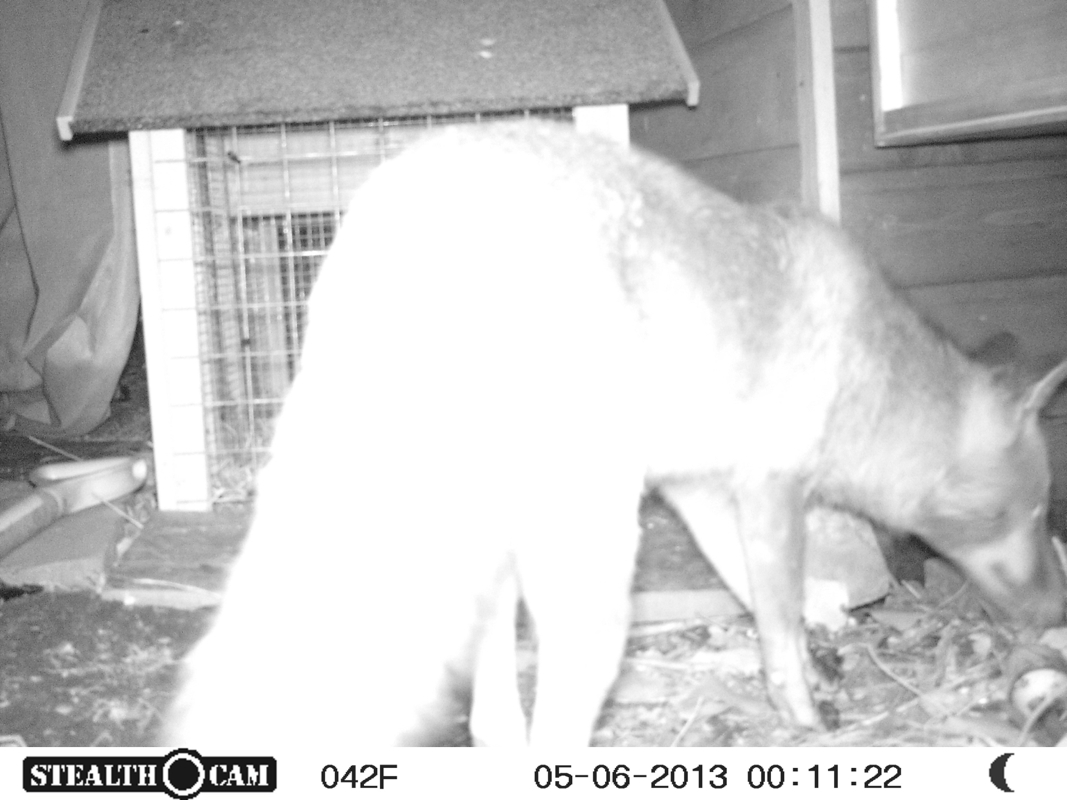
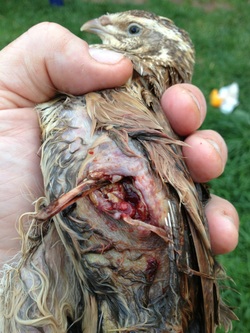
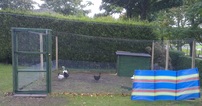

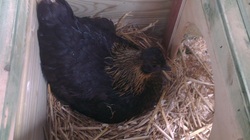
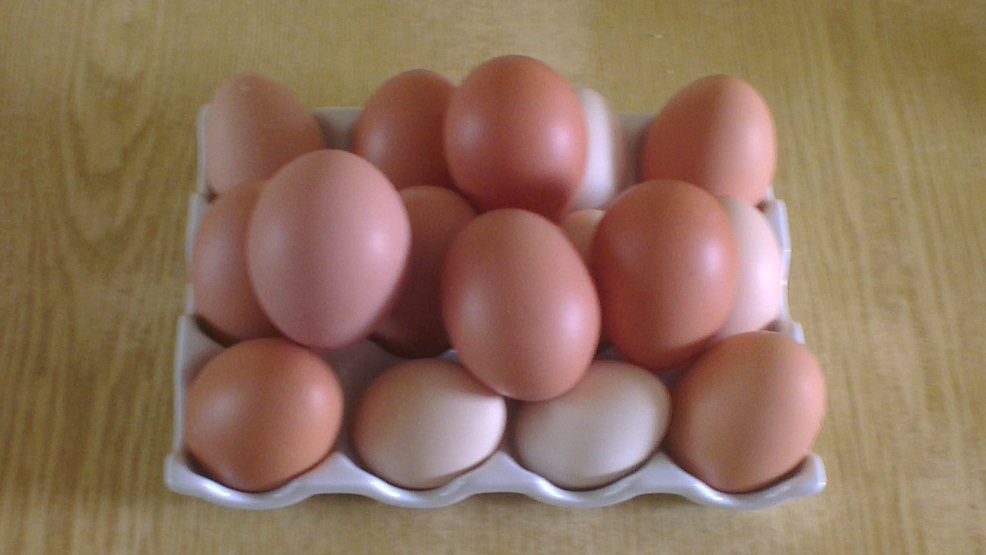
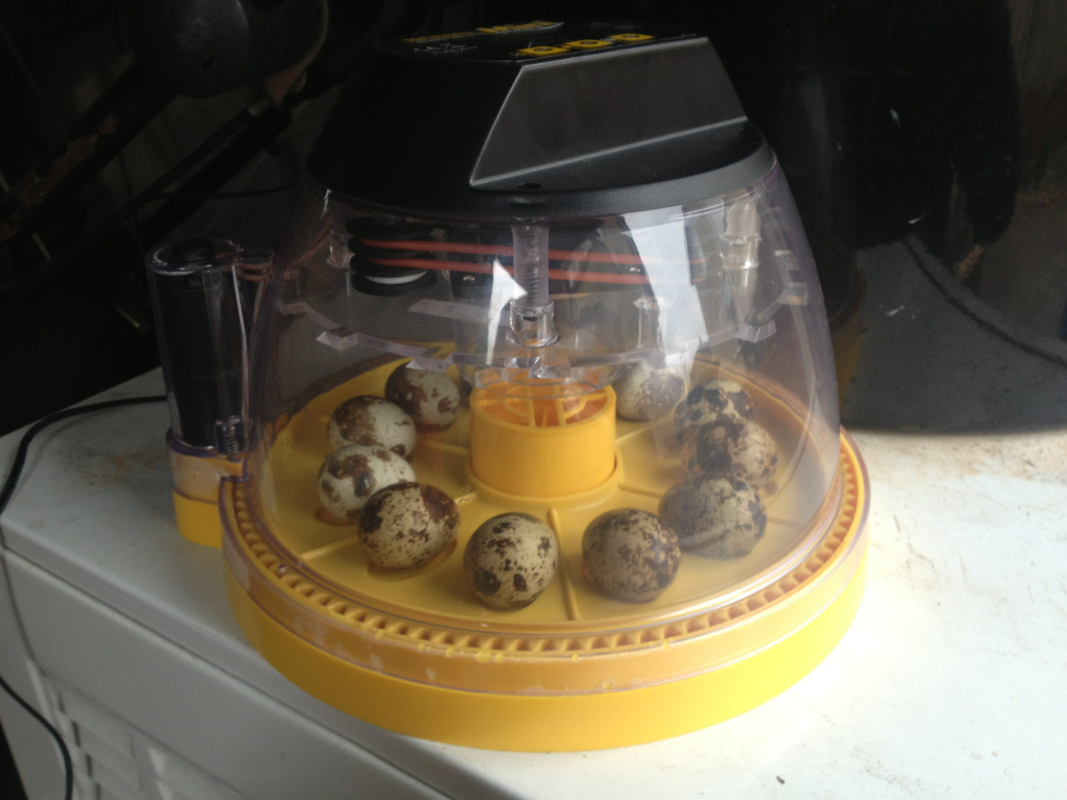
 RSS Feed
RSS Feed
